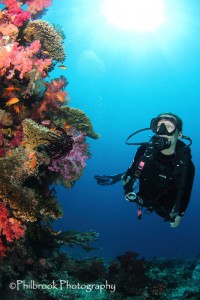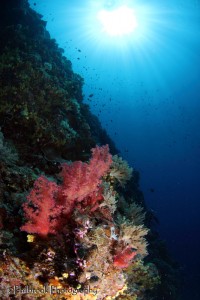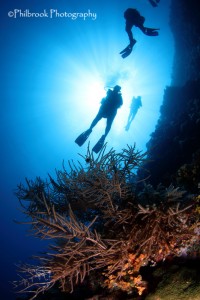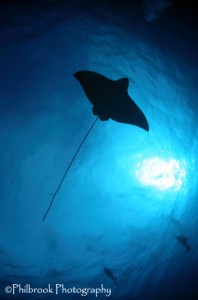Shooting Sunballs
 Shooting sunballs underwater is a great way to add depth to your compositions. They can be stunning if shot correctly but can also be tricky! Here are some tips on how to get great sunball shots.
Shooting sunballs underwater is a great way to add depth to your compositions. They can be stunning if shot correctly but can also be tricky! Here are some tips on how to get great sunball shots.
Lens Selection
The most dramatic sunball shots are generally taken using a wide angle or fisheye lens. Get as close as you can to your subject. This allows your strobe to light the subject efficiently while retaining good scene composition.
Camera Settings
When shooting Sunballs, there are some go to settings for at least a starting point.
For sunballs, Manual mode is the best. It allow you to take full control of your camera which is needed for sunballs.
Shutter Speed
Set your shutter speed to the fastest speed available that your camera can synch with your strobe. This is usually between 1/180 and 1/320 of a second, which will vary by camera model. This will keep the water as deep blue as possible and help keep the sunball itself in a nice, tight circle. It will also freeze light rays if visible.
ISO 100
Use ISO 100 (or the lowest available ISO). Your lowest ISO setting will give you the most optimum dynamic range within your camera (minimize banding around the sunball).
Aperture
Aperture is the parameter you will use to control the foreground exposure of your image. For sunballs shots, the aperture is usually set between F/16 – F/22.
Strobes
Set your top strobe to full power / manual. DO NOT use TTL. The sun will shut your strobe down prior to proper exposure in TTL mode. Your bottom or second strobe (depending on if your shot is portrait or landscape) can be set to TTL or ½ power. This will help keep from overexposing the bottom of your image.
Sunballs are easier to control in the morning or late afternoon when the sun is not at it’s highest point. It’s also easier to find beams of light during these early and later times.
When shooting sunballs in mid-afternoon, Try hiding part of the sunball behind coral, a diver, boat, or larger animal to help avoid blowing out the sun. You can also cut part of the sunball off the top of your image in the composition. It also helps shooting the image vertically. This allows the composition to take advantage of the blue water gradient from the top to bottom within the image.






